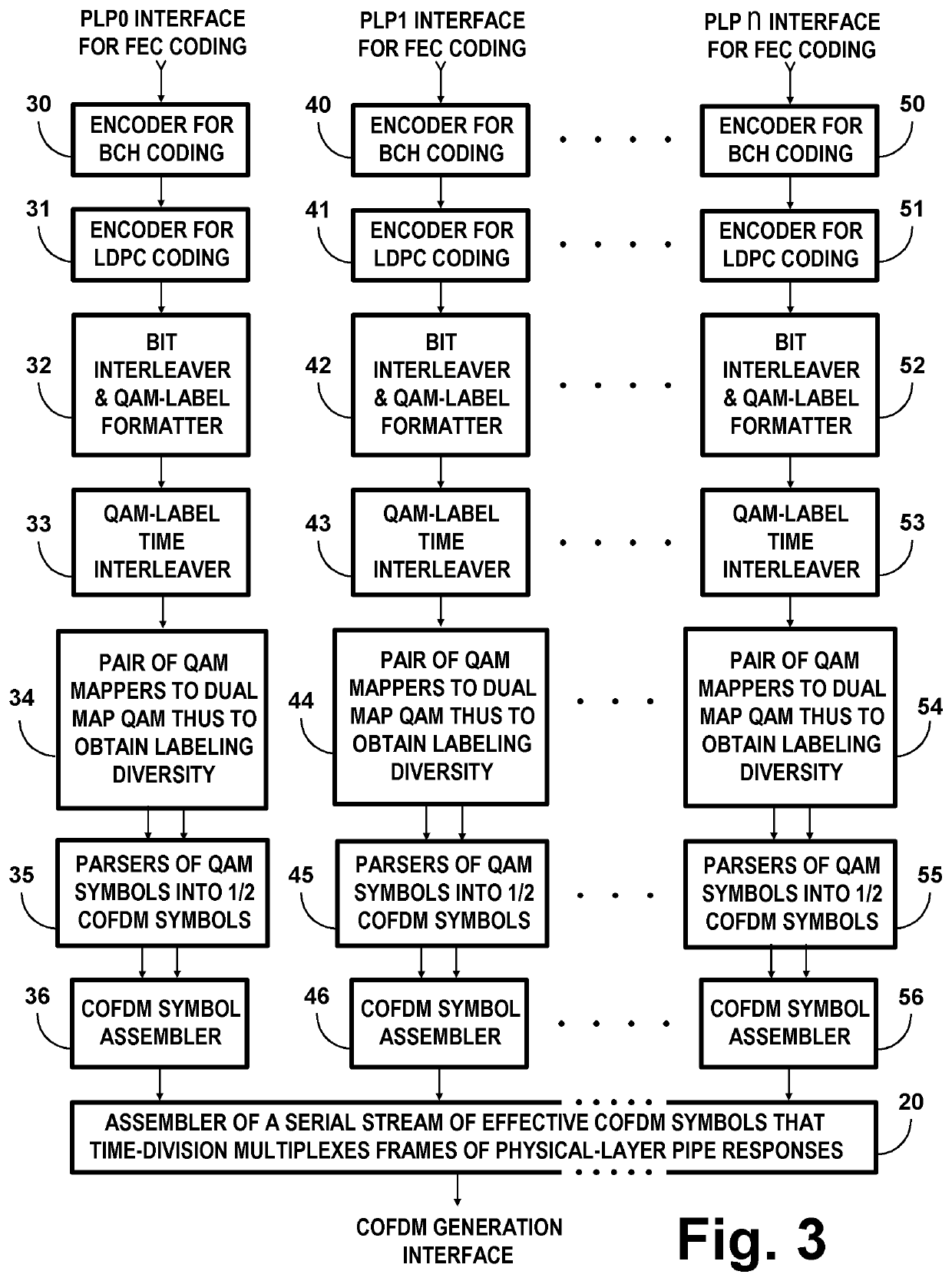COFDMSigbaling Using SCM with Labeling Diversity in Dual Carrier Modulation
a dual-carrier modulation and labeling technology, applied in the field of communication systems, can solve the problems of increasing the probability of bits error, not addressing the problem of dcm halving data throughput, etc., and achieve the effect of reducing the papr of the dcm cofdm signal
- Summary
- Abstract
- Description
- Claims
- Application Information
AI Technical Summary
Benefits of technology
Problems solved by technology
Method used
Image
Examples
Embodiment Construction
[0103]The FIG. 1 flow chart illustrates the general method for generating DCM COFDM signaling in accordance with the invention. Coded digital data (CDD) is generated in an initial step S1 of the method. The coding of digital data in step S1 customarily employs a forward-error-correction (FEC) code. The CDD is utilized by a pair of second steps S2A and S2B of the method, in which successive segments of CDD are mapped to appropriate points of successive complex-amplitude-modulation (CAM) symbol constellations. The CAM symbols can be quadrature-amplitude-modulation (QAM) symbols with non-uniform spacing between lattice points (so-called“NuQAM”), or amplitude-phase-shift-keying (APSK) symbols, or quadrature-phase-keying (QPSK) symbols. Preferably, however, the CAM symbols are square QAM symbols with uniform spacing between lattice points. Such CAM symbols are the easiest to demap in a DCM COFDM signal receiver.
[0104]In step S2A a first set of successive complex-amplitude-modulation symb...
PUM
 Login to View More
Login to View More Abstract
Description
Claims
Application Information
 Login to View More
Login to View More - R&D
- Intellectual Property
- Life Sciences
- Materials
- Tech Scout
- Unparalleled Data Quality
- Higher Quality Content
- 60% Fewer Hallucinations
Browse by: Latest US Patents, China's latest patents, Technical Efficacy Thesaurus, Application Domain, Technology Topic, Popular Technical Reports.
© 2025 PatSnap. All rights reserved.Legal|Privacy policy|Modern Slavery Act Transparency Statement|Sitemap|About US| Contact US: help@patsnap.com



